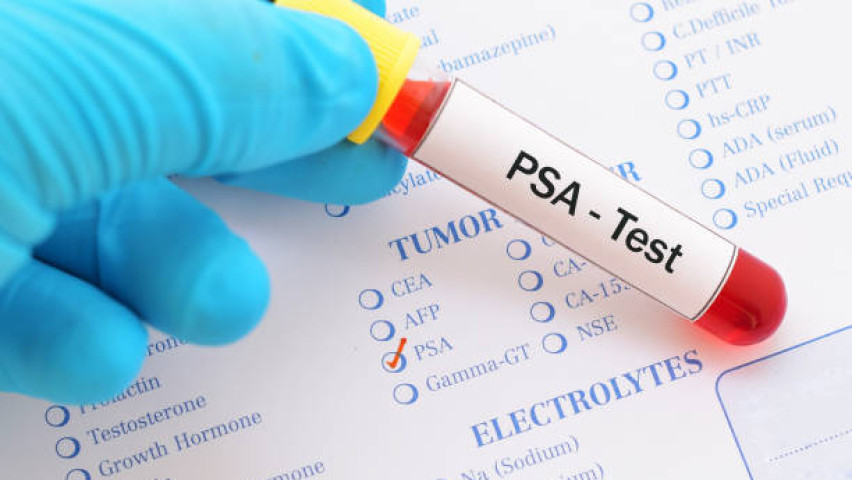BRAVEMEN INC.
Screening
If you’re a man over 40 years old, now’s the time to talk to your doctor about screening for prostate cancer.

Understanding Prostate Cancer
The prostate is a walnut-sized gland located just below the bladder in men. Prostate cancer occurs when cells in the prostate gland mutate and grow uncontrollably. While many prostate cancers grow slowly and may not cause immediate harm, some can be aggressive and spread to other parts of the body.
We'll provide you with valuable information on prostate cancer, the available screening methods, and the importance of taking charge of your health.

Prostate Cancer Screening
Prostate cancer is a significant health concern for men worldwide. It's the second most common cancer among men and the second leading cause of cancer-related deaths. The good news is that early detection through prostate cancer screening can significantly improve the chances of successful treatment.
Types of Prostate Cancer Screening
- PSA (Prostate-Specific Antigen) Blood Test: This simple blood test measures the levels of PSA in your bloodstream. Elevated PSA levels can be an indicator of prostate issues, including cancer. It's a valuable tool for early detection.
- Digital Rectal Examination (DRE): During a DRE, a healthcare provider inserts a gloved finger into the rectum to feel for any abnormalities in the prostate. While this may seem uncomfortable, it's a quick and essential part of the screening process.
When to Get Screened
The decision on when to start prostate cancer screening depends on various factors, including age, family history, and overall health. Generally, discussions about screening should begin:
- At age 50 for most men: If you're at average risk and in good health, this is a common starting point.
- At age 45 for those at higher risk: This may include men with a family history of prostate cancer or certain genetic factors.
- At age 40 for those at the highest risk: If you have multiple close relatives who've had prostate cancer, early screening may be necessary.

Prostate Cancer Screening Results
Prostate cancer screening has clear benefits, such as early detection and improved treatment outcomes. However, it's not without its limitations. False positives, overdiagnosis, and the potential for treatment side effects are all factors to consider.
If your screening results come back abnormal or raise concerns, don't panic. Abnormal results do not necessarily mean you have prostate cancer. Further tests, such as a biopsy, may be necessary to confirm a diagnosis. Its essential to have an open and informed discussion with your healthcare provider to make the right decision for your individual health needs.
Understanding PSA
Prostate-specific antigen (PSA) is a protein produced by the prostate gland, and monitoring its levels is crucial for assessing prostate health. The PSA test is a valuable tool, but it's important to remember that an elevated PSA level can also be caused by benign conditions, such as an enlarged prostate.
What is PSA?
- PSA is a protein produced by the prostate gland, and its primary function is to liquefy semen.
- PSA is found in small amounts in the blood, and measuring its levels can provide valuable insights into prostate health.
PSA Testing: The Basics
- PSA testing involves a simple blood test that measures the concentration of PSA in the bloodstream.
- Normal PSA levels can vary with age, and they tend to increase gradually as men age.
Interpreting PSA Levels: Normal Range
- PSA levels are typically measured in nanograms per milliliter (ng/mL).
- A PSA level of 4.0 ng/mL or lower is often considered normal for most men, but age and other factors should be considered.
Elevated PSA Levels: Potential Causes
- Elevated PSA levels can be caused by various factors, including:
- Prostate inflammation (prostatitis)
- Benign prostatic hyperplasia (BPH)
- Prostate infections
- It's important to note that an elevated PSA level does not conclusively indicate prostate cancer.
PSA and Prostate Cancer Risk
- While an elevated PSA level can be associated with an increased risk of prostate cancer, it is not a definitive diagnostic tool.
- Other factors, such as age, family history, and overall health, should be considered when assessing prostate cancer risk.
Understanding PSA Velocity and PSA Density
- PSA velocity measures the rate at which PSA levels change over time. A rapid increase may signal a higher risk of prostate cancer.
- PSA density considers PSA levels in relation to prostate size, providing a more accurate assessment of cancer risk.
Diagnostic Procedures Following Elevated PSA Levels
- If PSA levels are elevated, further diagnostic tests, such as a prostate biopsy, may be recommended to confirm or rule out prostate cancer.
- The decision to proceed with additional testing should be based on a thorough discussion between the patient and healthcare provider.
Understanding PSA levels is a key aspect of prostate health monitoring. While elevated PSA levels may be associated with prostate cancer, a comprehensive evaluation, including additional tests and consideration of individual factors, is necessary for accurate diagnosis and informed decision-making. Regular communication with a healthcare provider is essential for managing prostate health effectively.
Understanding the Gleason Score
The Gleason score is a system used to grade the severity of prostate cancer based on the microscopic appearance of the cancer cells. It is an important factor in determining the aggressiveness of prostate cancer and helps guide treatment decisions. The Gleason score is named after Dr. Donald Gleason, who developed the system.
The Gleason score is derived from the two most predominant patterns observed in a prostate biopsy sample. Each pattern is assigned a grade on a scale from 1 to 5, with 1 being the least aggressive and 5 being the most aggressive. The two grades are then added together to produce the Gleason score, which ranges from 2 to 10. In some cases, there may be a third grade assigned, but it is less common.
Here's a breakdown of the Gleason score:
- Gleason score 2-6: These are considered low-grade cancers, and the cells closely resemble normal prostate tissue. They tend to grow slowly and are less likely to spread beyond the prostate.
- Gleason score 7: This is an intermediate-grade cancer. It is further divided into two subgroups:
- 3 + 4 = 7: Moderately aggressive, with a better prognosis.
- 4 + 3 = 7: More aggressive, with a higher risk of spreading.
- Gleason score 8-10: These are high-grade cancers. They are more likely to grow quickly and spread beyond the prostate. Gleason scores of 8, 9, and 10 are associated with more aggressive forms of prostate cancer.
It's important to note that the Gleason score is just one factor considered when determining the best course of treatment for prostate cancer. Other factors, such as PSA (prostate-specific antigen) levels, the extent of cancer within the prostate, and the patient's overall health, are also taken into account.
Patients with lower Gleason scores may be candidates for active surveillance, where the cancer is monitored but not actively treated unless there is evidence of progression. Higher Gleason scores often prompt more aggressive treatment options, such as surgery, radiation therapy, or hormone therapy.
It's crucial for individuals diagnosed with prostate cancer to discuss their Gleason score and other relevant factors with their healthcare team to make informed decisions about treatment options.

African American Men and the Elevated Risk of Prostate Cancer
Prostate cancer is a significant health concern for men across all racial and ethnic backgrounds, but it disproportionately affects African American men. Understanding this increased risk is essential for early detection, prevention, and improving health outcomes.
The Facts
- Higher Incidence: African American men are more likely to develop prostate cancer than men of other racial or ethnic backgrounds. According to statistics from the American Cancer Society, they are approximately 76% more likely to be diagnosed with prostate cancer than Caucasian men.
- More Aggressive Form: Not only do African American men have a higher incidence of prostate cancer, but they also tend to develop a more aggressive form of the disease. This means that it may grow and spread more rapidly, requiring more intensive treatment.
- Younger Onset: Prostate cancer typically affects men as they age, but African American men are more likely to be diagnosed at a younger age, often in their 50s or 60s. This earlier onset can have a substantial impact on their quality of life and overall health.
The Causes
- Genetic Factors: While the exact causes of the increased risk in African American men are not fully understood, genetics are believed to play a role. Certain gene mutations and variations may contribute to the heightened risk.
- Socioeconomic Factors: Socioeconomic disparities can also be a contributing factor. Lack of access to quality healthcare, regular screenings, and health education can result in delayed diagnosis and treatment.
- Lifestyle and Environmental Factors: Dietary choices and environmental factors may influence prostate cancer risk. Research suggests that diet, obesity, and exposure to environmental toxins may play a role in the disparities observed.
Prostate cancer is a significant health concern for African American men, but through awareness, early detection, and access to quality healthcare, the disparities in risk and outcomes can be addressed. It's essential for African American men to take proactive steps in understanding their risk, engaging with healthcare providers, and making informed decisions about screening and treatment. Ultimately, knowledge and early intervention can lead to better health outcomes and an improved quality of life.
Conclusion
Prostate cancer screening is a critical part of maintaining your health and well-being as a man. In addition to screening, there are steps you can take to reduce your risk of prostate cancer. Maintaining a healthy lifestyle, including a balanced diet, regular exercise, and avoiding smoking, can make a significant difference in your overall health. Consult with your healthcare provider to determine the best screening schedule for your individual needs and stay informed about the latest advancements in prostate cancer research and treatment. Your health is your most valuable asset, and early detection can be a lifesaver.